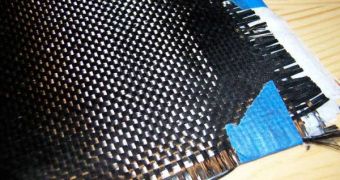Composite materials, such as fiberglass and carbon fiber, are among things that are part of the most modern construct and advanced systems, ranging from intelligent clothes to stealth airplanes, and their benefits to the world are obvious upon taking a closer look at their properties. However, not content with just benefiting from them in a normal manner, researchers at the Massachusetts Institute of Technology have been, for quite some time now, looking for ways of making them ever smaller, until they have finally managed to reach the nanoscale.
Naturally, at such a high level of miniaturization, the materials start exhibiting unusual properties, which they don't have when their size is increased. For example, a team of scientists based at the Los Alamos National Laboratory (LANL), and led by MIT Department of Materials Science and Engineering Assistant Professor Michael Demkowicz, is currently looking into ways of making nanoscale composite materials that can withstand intensive heat, radiation and mechanical strain.
The range of applications for which these new materials could be employed once they are researched is seemingly endless, and spans from uses in nuclear power and fuel cells, to solar energy improvements and carbon sequestration methods. “All sectors of energy production need materials that can withstand extreme conditions,” the MIT expert says. His model is one of the few that offer a novel and innovative approach to designing the composite materials with the exact traits researchers need.
Rather than waiting for new materials to be discovered, and then making use of them, as in other models, Demkowicz's idea is that researchers should be actively engaged in producing the materials they want. To do that, they have to start by establishing the traits they need composite materials to have, and then simply begin from the next best thing, and move gradually towards their objective. And while this process can take up to a decade, the advantage is that it works a whole lot faster than any of the other approaches known to science until now.

 14 DAY TRIAL //
14 DAY TRIAL //